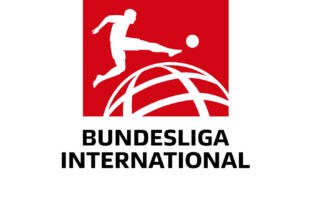
 RIO DE JANEIRO – As the FIFA World Cup takes place in Russia, Globo has been providing Brazilians with active coverage of the major global event. Currently, the Brazilian network’s ratings for the first part of the World Cup in Russia have grown in relation to the 2014 World Cup in Brazil.
RIO DE JANEIRO – As the FIFA World Cup takes place in Russia, Globo has been providing Brazilians with active coverage of the major global event. Currently, the Brazilian network’s ratings for the first part of the World Cup in Russia have grown in relation to the 2014 World Cup in Brazil.
The FIFA World Cup in Russia, from its beginning on June 14 to July 1, had garnered a daily reach of more than 99 million people in the PNT (national television panel), between 7am and midnight.
In relation to the same number of games for the Brazil World Cup in 2014, there has been a 17% growth in audience. And in relation to the programming grid in the 4 weeks prior to the start of the World Cup, the increase was 31% in the same hour range.
The highest ratings of the first phase came from Brazil’s win over Serbia on June 27, reaching approximately 74 million viewers and a share of more than 80% – 8 of every 10 households watching TV were tuned in to Globo.
This is the highest index recorded in a football match since the one between Brazil and France during the quarterfinals of the 2006 World Cup. The recent Brazil versus Mexico match on July 2 also reached around 74 million viewers, with a share of 84%.
In the digital environment, the innovative coverage prepared by Globo for the event has also been showcasing the audience’s engagement. So far, the World Cup has 1.4 million comments, originating mostly from Twitter and Facebook. For Trending Topics (TT) , 47 unique terms were activated in the world’s TTs and 109 unique terms in Brazil’s TTs.
For this World Cup, Globo is broadcasting outside Brazil, in addition to news coverage, the Conexão Rússia (meaning Russia Connection) show. Created to capture and transmit the excitement that overcomes the country and Brazilians during the World Cup, the program features fans from different regions, foreigners in Brazil, and players’ families to show the essence of an entire nation that is passionate about football.
Globo consistently aims to maintain a close relationship with its audience and an extensive knowledge of Brazilian interests and habits, reflected in its wide-ranging, current and relevant content for more than 100 million viewers reached daily through its multiple content platforms.
The network had prepared its coverage for the 2018 World Cup based on this synergy with the audience that engages Brazilians on a daily basis. Globo will broadcast a total of 56 live matches in Brazil by July 15. All of the network’s major programs and news shows are also being anchored directly from a special studio assembled on the Red Square in Moscow, featuring state-of-the-art augmented reality technology.
Globo and the paid TV channel SporTV, from the same group, are the only Brazilian networks broadcasting from the city’s world-famous landmark, alongside nine others from all over the world. Portability, mobility and agility are critical to the event cover, which will include a total of 600 hours integrated across Globo, SporTV and Globoesporte.com, along with 400 professionals dedicated to the event across all three platforms, half of them working in Russia.








